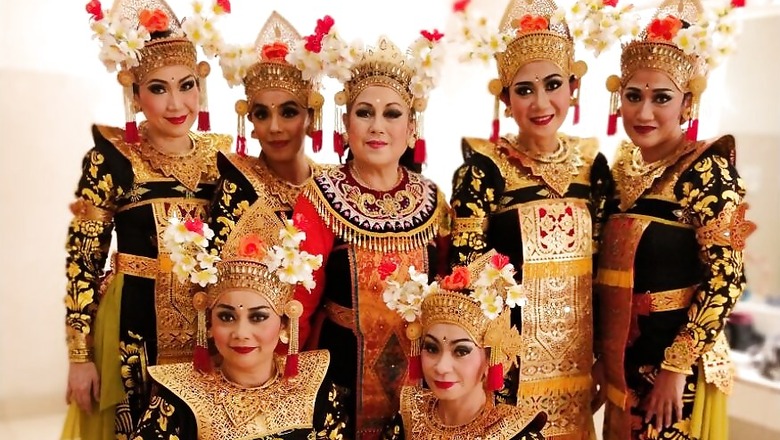
views
New Delhi: Ramayana has always been popular in Indonesia, with Bali, Java and Jakarta having their own interpretations of it.
The Hindu epic will now reach a larger audience in Indonesia through Legong, the historical Bali dance traditionally performed by young girls.
Seven dancers from Indonesia picked Ramayana as the theme for their Legong performance at the ASEAN Summit.
At the heart of this departure from tradition is Ayu Bulan, a dance troupe from Bali. Reframing the narratives of masculinity and challenging the patriarchal hegemony by retelling characters through feminist lens, the troupe members relate to the strength of Sita and philosophy of the legend.
The troupe counts Muslims, Buddhists, Christians and Hindus among its members, who also lead diverse professional lives — doctors, painters, poets and some are architects.
The role of Sita is played by troupe leader Bulan Trisna Djelantik, a Muslim. “Ramayana goes beyond these barriers of religion and ethnicities. In Indonesia, it is a philosophy of life. It is integral to every household. We teach our children about Rama and Sita and tell them they are our heroes," Bulan said.
A lecturer at the Padjadjaran University in Indonesia, Bulan traces her roots to the royal family of Indonesia. But for her, being a Muslim doesn’t mean she can’t celebrate Ramayana.
The seven-member troupe she leads has four Muslims and their love for dance and storytelling is not just limited to Ramayana.
“The legend is part of our culture and we celebrate Mahabharata as well," Bulan says.
A large Indian diaspora living and working in Indonesia share an important cultural bond with India.
Over the past two decades, India’s ‘Look East’ policy has been complemented by Indonesia’s ‘Look West’ policy in bringing the two countries closer.
The Novel Dance Form
The troupe put up a splendid slow at Delhi’s Kamani Auditorium on January 22.
As the lights poured in, the dancers moved to the tune of Gamelan music — traditional ensemble notes from Java and Bali by percussive artists.
They depict the ferocious fight between Subali and Sugriwa (Vali and Sugreeva), the young lads in combat jumping into Nirmala Lake. Legend has it that their father cursed the two brothers. Soon, they surfaced with their bodies transformed as Vanara — half human, half monkeys.
The intricate finger movements and complicated footwork, masks of monkeys and legendary heroes worn by the seven artistes, is woven together with ethereal choreography. The dance form is divided into three parts: Pengawit (opening), Pengawak (body of dance), and Pekaad (epilogue).
The Other Version of Ramayana
The Indian Ramayana is the original Ramayana authored by Valmiki.
The Indonesian Ramayana is the Sri Lankan version of Ramayana, authored by Rishi Kamban and titled ‘Ramavataram’. It was written in Tamil.
But there is a major difference in how Sita is depicted in Indonesian culture. Indian Ramayana portrays Sita as a soft and beautiful woman, whereas the Indonesian Ramayana depicts her as bold, strong and powerful. She fights with Asuras and Asuris in Ravana’s Lanka, not waiting for her husband to arrive and free her from captivity.
Sita: The Original Hero
The artistes, who were part of the performance, are impressed by Sita’s strength.
“She had her chin up and head set high even in her darkest hour and did not fall on her knees. Sita’s anger had patience and weakness in her strength, and that is because above everything else she is a woman," said Minangsari, a troupe member.
“It is a story of imperfections. Sita wanted the golden deer that was her imperfection and Rama trusted people over Sita; that was his imperfection. Both are very real and tell us about the conflicts we see in life," Bulan troupe leader said.
Revival in Times of Superheroes
Adrienna Wallis, an architect who plays Rama, believes that another reason to embrace Ramayana today is the relevance it brings to the modern world.
“There are suddenly so many superheroes coming from the western countries that it has become all the more important for us to celebrate Ramayana in as many ways as possible. I tell children and youngsters back home that before giving into the charms of Superman and Batman, don’t forget Rama, Sita and Hanuman," said Adrienna.




















Comments
0 comment